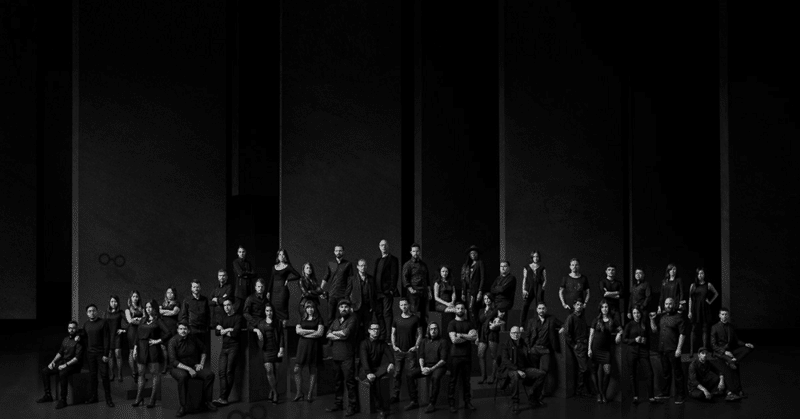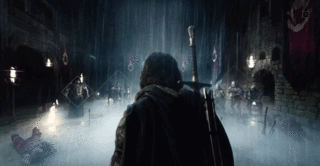
“Employees come from over 10 countries. With an international team, we pursue the highest level of creativity.” — by Jam3 <vol.7>
For this year’s final issue, we interviewed a digital design production Jam3, who won in 2016 the Cannes on the website MTV VMA. And more recently, fresh in our memory for winning the Awwwards, FWA, CSS DA’s “Site of the Month” on Dunkirk WebVR. It’s headquarters are located in Toronto Ontario Canada, and unusually for a company in the creative industries, it also has a base in South America. With an international team with members from over 10 countries, how do they keep producing high quality creative content?
Question 1:
Please tell us about your company.
Jam3 is a design and experience studio. We have around 60 members and our offices are in Toronto, L.A., Montevideo, which is capital city of Uruguay. Out of three offices, Toronto is the biggest and 45 people are working.
Reason for opening the office in Uruguay is that one of our business partners is Uruguayan. We were starting to do work in Brazil and South America, and it’s a lot easier to set up a business in Uruguay. It is also a very clean country with low levels of corruption, so it’s a sacred place to do business. It gives us better access to the South American market, and most importantly, it’s a talent center for us. We can attract talent from all across South America and the Spanish-speaking world to work with us there. It’s a great city and it’s a safe country with free health care and universities. It is a very attractive place for people to come and work with us.
We started off as a market opportunity; we started that office prior to the Olympics and the World Cup of soccer. We were looking at a lot of work for those two events in Brazil, but it became more of the talent thing over time.
Question 2:
When your team starts a new project, what process do your members follow?
Oftentimes, clients will come to us for one of three things. They’re either coming to us for some sort of product design work or for an experience, something that tends to be more story-driven. That could be digital documentaries or campaigns. And the third thing people come to us for is experiments, creative technology, and innovation-type stuff.
In all cases it is very important to ask great questions. Always need to dig through a different set of questions and investigation to arrive at the point where you think it is right to get started. When it comes to experiments, we actually try to keep that really simple and ask a very simple question like “What would a better, richer calculator feel like?” or “Can we control a robot using AR?” Also things like “What will the experience be like for that?” Those become very discrete and simple questions, often with complicated answers. But that’s the nature of experiments.
Depends on how deep we need to go but usually, project either starts with our strategy lead or an executive producer. Starting with a strategy lead is generally for a more detailed set of investigation. If it’s starting with an executive producer or an UX lead, that’s generally a more simple set of investigation. It’s more production-focused like “How do we make this thing? How do we make sure that this is culturally relevant?” Long story short, those people all get involved and they tend to create two documents. One is essentially a creative deck like a PowerPoint or a Keynote, which explains the idea.

Depends on how deep we need to go but usually, project either starts with our strategy lead or an executive producer. Starting with a strategy lead is generally for a more detailed set of investigation. If it’s starting with an executive producer or an UX lead, that’s generally a more simple set of investigation. It’s more production-focused like “How do we make this thing? How do we make sure that this is culturally relevant?” Long story short, those people all get involved and they tend to create two documents. One is essentially a creative deck like a PowerPoint or a Keynote, which explains the idea.
Our UX people actually sit inside the creative department, and they’re a part of that team. They have to integrate their thinking and the way of working with designers. We find that that’s a really nice and fluid way of making sure that user experience design isn’t separated from the way it looks and feels in the emotional part. And then we get into designing the site itself and the experience.
All of our designers participate in a weekly “creative critique” where all designers come in and share the work they’ve been doing. Since the middle creative director runs it, It’s very casual and not a formal thing. That’s a great way of cross-pollinate design thinking across to make sure that everyone is growing nicely in their design practice.

Question 3:
When your team starts a new project, what process do your members follow?
We are very concentrated right now on working with the film and entertainment industry. We are also doing a lot of work with technology companies, and with them, a lot of time, we are helping them to solve design problems, to explore new paradigms around products or help them explain their products to people.
Question 4:
Do you show the progress of your work to the client?
Yes, we do and many times. We would like to go with just two reviews, but that’s inappropriate. Our producers and clients are speaking every day. We’re usually working with clients in San Francisco, L.A. or New York, so we don’t see them very often. We use tools like Google Hangouts, the phone, and Slack to communicate. Especially, Slack is a wonderful tool for collaboration. We’ve been letting our clients into our production channels. And also we’ve been creating specific client channels for our clients to discuss the project with our leads.
Our core project team is usually around five to six people. And out of those people, there are typically three or four people who are considered leads, such as the lead designer, the lead developer, the producer, and usually there is a UX lead. We find that creating clarity around roles and leadership is really working for people to know how to work with each other.

Question 5:
If your team does the pitch, please tell me how often does it?
Right now, we have about 15 to 20 pitches we are working on. When we have a new business opportunity, we usually put together a new pitch even we don’t have competitors. Usually it’s competitive, and even if there is no competitor, we always treat it as competitive. We still want to put our best foot forward and create definition before we get started. And we find that the best way to create definition about what we’re going to do together involves either a discovery phase of a few weeks or we’ll pitch and in doing that we will say, “This is where we’re going visually, this is how much it’s going to cost, and this is how long it’s going to take. Let’s do it.” If you’re already committed to it, it’s better to set the expectations in the beginning.
Question 6:
On average, how many projects does one person handle at the time?
It depends on the role of the contributor. Usually developers one, everybody else are two to three. Senior members tend to handle more, but they also handle it at the high level. They are less involved, so they may cover six or seven.
Question 7:
What are some of the ways that your company provides good working environment for your employees?
We bring in a lot of international talent. It’s really important that we provide a good on-boarding experience for our talent, especially when they’re coming from another country. We have had people here from Portugal, Brazil, Uruguay, Argentina, Chile, China, Russia, Ukraine, US and Japan — all over the world. For the working environment, we use English. Some people can speak English better than others, but that’ ok. We make a lot of use of Slack and a lot of communication is done over Slack, so it gives people, whose English skills are not that strong, the ability to take their time and compose their thoughts in writing, which is sometimes a lot easier.

Question 8:
At Jam3, does anyone work overtime?
In any sort of creative business, that’s constant. I think that’s driven by two things in our industry: ambiguity and passion. But you have both of those things consistently within creative problems. It wouldn’t be a creative problem to solve if there wasn’t ambiguity, and passionate people are driven to solve creative problems. It is the nature of these problems that you can’t solve them in a linear way. You go forward and backward and forward…and because of that, it takes a long time. Therefore, it’s very hard to estimate how long it will take.
Now, when it comes to overtime, we value people’s private time with their families, that’s super important. Culturally that’s really important for us that we are getting most people home at a good time. When that doesn’t happen, we make up for it. I think we’re one of the very few companies that have a lieu day policy like in the EU. If people are working on Saturdays and Sundays or working late at night constantly, we work very hard to make sure we have a fair way of repaying that time to them, so that they can make up for that with their family and friends.
Question 9:
Do you allow members to work from home? Also do you allow having a job on the side or side projects?
People can work from home. That can be very effective for certain people. We try to keep it a little focused on it, so that it’s work from home with a purpose and is more productive.
We have some folks here who started a side project that has turned into a Jam3 project, which is kind of neat. So yes, you can encourage people to explore those things and explore them together. But we don’t think it’s appropriate for our staff to be freelancing at other companies since we commit a lot to them. So we kind of expect that commitment in return. But in terms of fun creative projects on the side, that’s great.
Question 10:
For the last, what is the most important requirement for doing good work?
We think it’s a company culture that is on a relentless pursuit of better — better work, better experience, better process. Without that, you’re not going to do great work. You have to build that culture and understanding of what great work is and how we do it. And everyone has to want it. And ultimately, the answer is the talent. Hiring the right talent, finding the right talent, uniting that talent under the same purpose — those are some of the things.

Jam3’s SNS account
Twitter / Facebook / instagram / dribbble
Click here for previous articles
Follow us!

この記事が気に入ったらサポートをしてみませんか?
